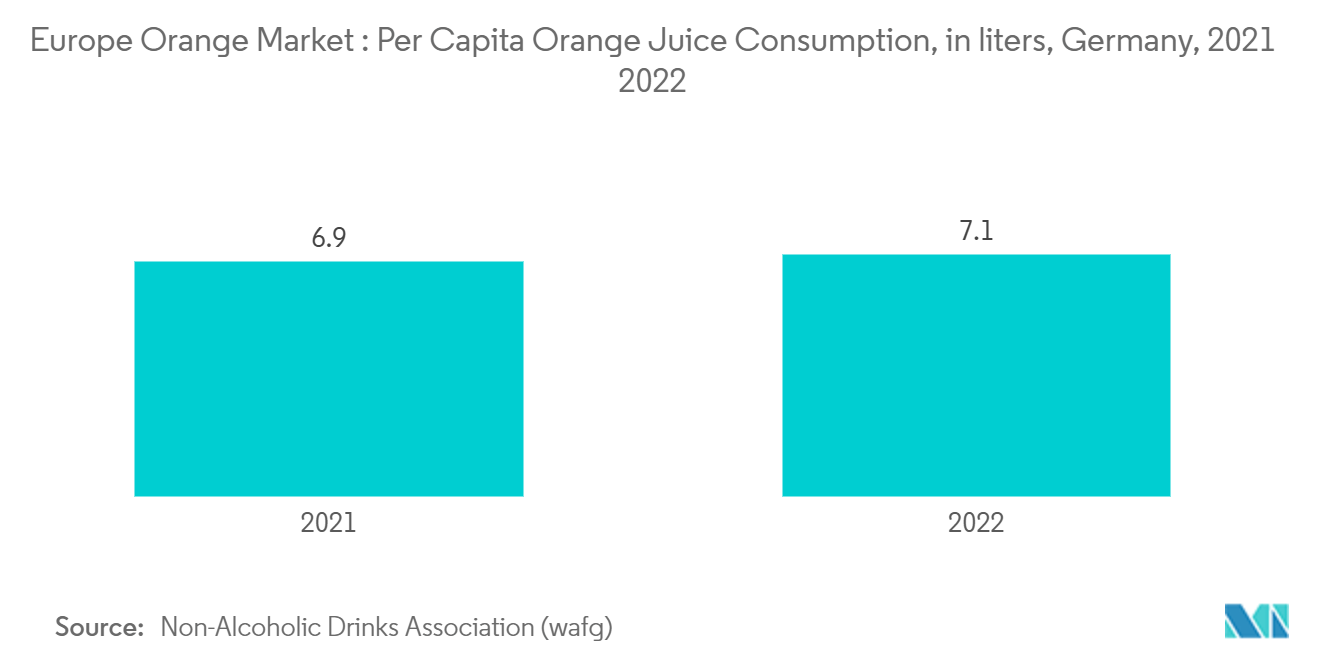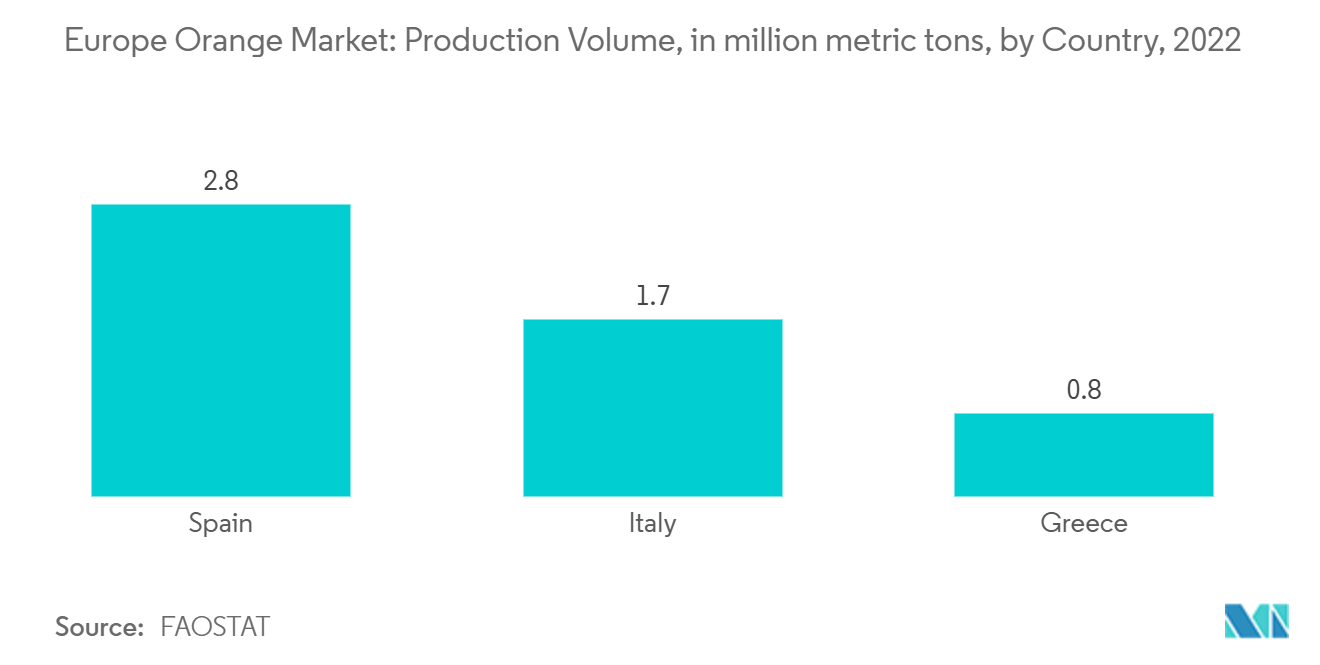Market Trends of Europe Orange Industry
Growing demand for Oranges in Processing industry
- Consumers in the region are increasingly gravitating towards oranges, drawn by their natural sweetness, diverse varieties, and versatile applications, including juices, marmalades, face masks, and candied slices. The nutritional and functional benefits of these applications have heightened the demand for oranges in the food and beverage processing industry. As a key raw ingredient, oranges are vital in sectors such as beverage processing and cosmetics. This significance has spurred a rise in both the demand and consumption of oranges, further propelling their use in processing industries. The growing consumption of products like orange juice, orange-based cosmetics, and essences underscores the demand for oranges as a primary raw material. For instance, the Non-Alcoholic Drinks Association (WAFG) highlighted that in 2022, Germany's per capita consumption of orange juice climbed to 7.1 litres, up from 6.9 litres the year prior.
- Oranges are central to the food industry, featuring prominently in products like juices, jams, and flavouring agents. Recent advancements in processing technologies have not only improved the quality and shelf life of orange products but have also heightened their appeal to consumers, manufacturers, and retailers. This growing allure has intensified the consideration of oranges as a primary raw material across various processing industries. In September 2024, the Self Serve milkshake brand F Real unveiled its new Chocolate Orange flavour, strategically launched for the autumn season.
- Industry players are diversifying their product lines with distinctive orange-flavored offerings. This trend, spanning cosmetics, food, and both alcoholic and non-alcoholic beverages, is propelling market growth. For instance, Europe's alcoholic drinks market is on the rise, with a discernible tilt towards premium and craft products, paving the way for the emergence of orange-flavored beverages. In alignment with this trend, Jim Beam rolled out its orange-flavoured Bourbon-based liqueur in the UK in March 2023. Furthermore, Europe's stature as the world's second-largest cosmetics market, combined with its burgeoning appetite for natural ingredients, is luring companies. This scenario offers manufacturers a golden opportunity to roll out innovative orange-based products, leveraging their well-known skin and health benefits, and propelling market growth during the forecast period. Thus, the growing usage of oranges in the food processing industry aids the market growth during the forecast period.

Spain Dominates the Market in Terms of Production and Export
- Spain stands as Europe's leading orange producer and exporter, benefiting from favourable weather conditions such as a rainy spring and mild summer. The Food and Agriculture Organization (FAO) reported that Spain produced 2.8 million metric tons of oranges in 2022, making it the top producer in the region. Italy followed with 1.7 million metric tons, and Greece with 0.8 million metric tons. Valencia and Andalusia are the main orange-producing regions in Spain, where both early and late varieties are cultivated to ensure a continuous supply throughout the year.
- The Spanish fruit sector focuses on sustainable production, smart farming, digital advancements, green packaging, and high fruit quality. Enhanced harvesting and processing methods have led to increased productivity. According to the United States Department of Agriculture, 40% of Spain's orange production is consumed fresh domestically, 15% is processed (mainly into citrus juice, essential oils, and by-products), and 45% is exported.
- The International Trade Centre (ITC) identifies Spain as the world's largest orange exporter. Major importers include Germany, France, and the United Kingdom. In 2023, Germany accounted for 27.7% of Spain's orange exports, followed by France at 24.7% and the United Kingdom at 6.1%. The ITC trade map also indicates that the value of exports rose from 1.22 billion in 2022 to 1.29 billion in 2023. Consequently, Spain's high production and export potential are expected to drive market growth during the forecast period.


